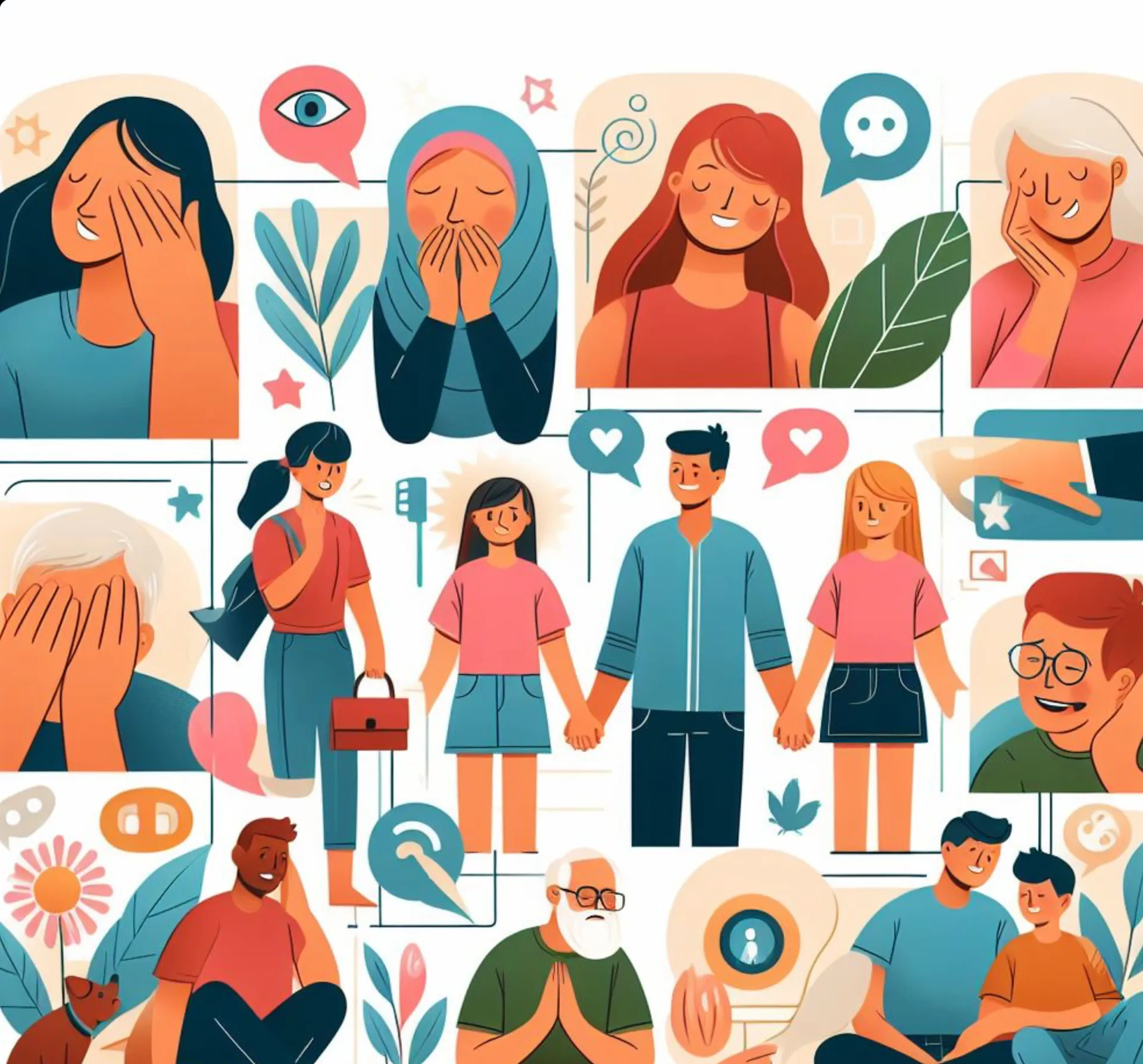Heal Emotions Faster – Learn To Track Sensations
After 25 years of working with individuals and groups of people, I’ve noticed a consistent problem. The problem is, people have forgotten that emotions have bodily sensations associated with them.
They have tuned out of their bodies so much; they don’t realize there are sensations with every experience they have in life, good or bad.
Knowing how to track these bodily sensations is one key aspect to healing your past emotions or getting better results for yourself in the future. Anyone can lear where physical sensation are located.
The goal of this article is to help you to finally embody the belief that when you can pause and track those sensations, stuck emotions get resolved. Your life then becomes more manageable, and you’ll reach your goals faster. You’ll create the outcomes you most desire with more ease and flow.
The fastest way to heal any emotional upset is first to notice the sensations, name the emotion(s), then track the feelings until the emotions are calmer. This wisdom comes from an immense amount of research over the past 50 years related to Body-Centered Psychotherapy.
Modern forms of psychotherapy are now using body-centered approaches to healing debilitating emotions. Here’s why. When there is a perceived threat in our environment, the brain sends signals or electrical charges through synapses to various parts of your body to mobilize a safety response. Emotional problems start when these electrical charges are not allowed to complete their mission. The electrical impulses get stuck in the body. These “electrical charges” are the sensations and emotions we experience.
Your Belief Systems Are Always Being Influenced
The energy that gets stuck in our body also directly affects our belief systems on how the world works. We assign meaning to everything. Much of the time, it’s happening so fast you don’t realize it. It has become an unconscious pattern.
The next problem occurs when “stuck energy” is not dealt with suitably, and in time, the “stuck energy” becomes normalized. In other words, you don’t even realize the emotions are stuck in your body. Once the associated memory is unconscious, we become “sitting ducks” to future events that will trigger our response that never got completed.
The next thing to know is the energy that becomes stuck gets stored in your implicit memory system. Think of this memory system as muscle memory. For example, once you learn to ride a bike or play an instrument, you don’t have to re-learn it each time you want to ride or play. In this way, the implicit memory system is useful.
The challenge is this: if we continue to repeat destructive patterns that are unconscious to us, we stay stuck in a loop. Any event or situation that even slightly reminds you of the original past event will negatively influence you without you realizing it is coming from this stuck energy.
Remember, belief systems get formed around these stuck energy patterns. You are like a puppet on a string, not understanding why you keep getting bad results in your life.
Why It Matters In The Real World
Why is this relevant? Now you know that events and the meaning you assigned to something get stuck in your implicit memory system. The way to resolve this permanently is to breathe into the sensations and track them as they move.
In other words, remove the coping mechanism, and you’ll get relief.
Some examples of this dynamic playing out include:
- communication challenges
- intimacy challenges
- socializing challenges
- self-worth challenges
- “playing small” issues
- poverty challenges
- violence issues
- attracting certain kinds of partners
As you learn to track the sensations, you are training yourself to be present with the feelings associated with them. If you stay with them long enough, they eventually complete their course and find a resolution.
Once you resolve them, the “incomplete” memories are no longer influencing your reaction. You become much more aware of your experience moment-by-moment. Your belief systems begin to change.
If you practice tracking your breath and sensations enough, you’ll soon realize the emotional experience you imagined happening is not as bad as you thought it would be. In essence, you are re-informing your nervous system. And your critical thinking skills come back online, helping you to re-inform your nervous system. You begin to draw novel conclusions, causing your belief systems to change.
The reason you are getting triggered is that something in your environment is priming your implicit memory system. If your situation is triggering good memories, you’ll be happy. If the event is triggering unresolved memories, you will go very quickly to the stressful place you went to initially. Your natural response will be to activate the old coping pattern.
But don’t do it. The consequence of shutting it down or avoiding it is that memory will rear its ugly head at another time in the future, keeping you stuck in a vicious cycle.
Remember, life experiences will trigger older, unresolved memories from the implicit memory system. The distressing memories are the ones we want to pay attention to. They make life more challenging. They lead us to make bad decisions.
Those memories most often relate to when you were younger and unable to be effective at critical thinking. When you get triggered, it’s as if you take a step back in time. When we are little, we have a bounded point of view. To heal this, we need to slow things down enough for the brain to register the new information.
Incompletions Keep Us Stuck In The Past
In my coaching practice, we call these memories incompletions. They are moments when we were little that was scary, highly emotional, and most often too much for our nervous system to handle.
When we are little, we can’t soothe ourselves without the primary caretaker’s help. They may be unskilled or mis-attuned to your needs. This dynamic is often the source of what causes us to be susceptible to trauma later in life.
When we get soothed in a healthy way, our default response eventually becomes habituated. It becomes a pattern stored in your implicit memory system. In other words, the quality of our ability to soothe ourselves is reflective of those vulnerable years.
Self-regulation is a learned experience. It’s an essential skill to handle life challenges effectively. It’s the answer to the question, “How can two people side by side experience something traumatic have such different experiences afterward?” The quality of Self-regulation is the key.
If we cannot handle the stress of the moment, we put coping mechanisms in place. We don’t apply healthy self-regulation strategies. Later in life, these coping mechanisms fall apart. Some people would call that a mid-life crisis.
What’s being healed? So let’s pause for a minute and discuss this.
Knowing Your Biology Helps Your Emotions Heal Faster
Looking at your biology makes healing much easier to understand. When you know it, coupled with responsibility, you will heal faster.
First, there are two types of memory systems: The explicit memory system and the implicit memory system. The explicit memory system is the memory system that allows you to tell a story. It’s like there’s a part of your brain that has a date code and time stamp on a series of events that happened that you can explain. Your brain knows it occurred in the past.
The other type of memory is called the implicit memory system. Think of the implicit memory system as muscle memory. It produces a fast result based on past repetitions. Whatever you have repeated over-and-over again comes out without effort. There is NO date code or time stamp associate when this memory is activated.
So it makes sense that the explicit system is excellent for recalling information and telling stories. And the implicit memory system is perfect for riding a bike, playing an instrument, or driving a car.
The problem comes in when dysfunctional patterns that you learned before age seven start getting triggered. You see, in your first five years of life, it’s the implicit memory system that is mainly doing all the work. Think of it as a recording device that is logging all of the patterns and coping mechanisms learned from the moment you were born.
And you know now, the implicit system does not have a date code or timestamp associated with the memory. It’s what leads you to get triggered 30 or even 40 years later on the same issue. It’s beneficial first to recognize when you’re triggered; it probably means an old memory is getting activated from your implicit memory system.
Tracking sensations and noticing the change in your body makes it easier to interrupt your knee-jerk reaction and slow things down. Your goal is to move into curiosity, ask more questions, and to track sensations.
Your ultimate goal is to update your memory system. If you do this enough times, eventually, you’ll stop getting triggered.
Daily Practice To Build Your Tracking Skills
Here is a practice you can begin using today to help you learn to track sensations.
- Sit quietly. Look around the room. See if you see any evidence that anything is dangerous. If not, say to yourself, “This is what feeling safe feels like.” You can say it in your head or out loud. Some people prefer saying it out loud because it can have a more significant impact inside you. Do this for a couple of minutes.
- Next, scan your body. Notice any place where you are tense or open. If you feel any areas that feel tight, don’t try to rub them to make it go away for this exercise. Instead, be present with those sensations.
- Notice what happens when you simply observe your experience.
- Now think of something a little distressing as you do that notice what starts changing in your body. Write that down if needed. Stay with the sensations until you feel a complete cycle of activation and back to calmness.
- Now think of something positive. With your imagination, go into great detail of that experience and why it is so positive for you. Feel what starts happening in your body. Stay with it until you can feel your energy leveling out and normalize again.
Practice this exercise a few times over a couple of weeks and notice if it becomes easier to notice sensations. In your daily life, practice scanning for sensations during difficult or sensitive situations where higher emotions are present. Practice staying with them longer (that includes positive feelings when you are happy). If you are at work and need to do it later, then write yourself a note and practice at home.
Practices like this will train you to be more emotionally intelligent. You will get better at self-regulation. You will notice more layers that are going on in you, causing you to make poor decisions. You will begin to challenge beliefs that are compromising your success.
If you would like a more comprehensive tool to help with self-regulation, you may find the 10-Second Self Soothing Guide useful. You can find it here. This guide goes into far greater detail about re-patterning your nervous system and your implicit memory system. With the skills taught in this guide, you will be more resilient in life. The guide is especially useful for front-line workers who are in everyday stressful situations.
Please comment below and share this article with your social media portals by clicking on the share buttons. That encourages me to continue to support you with tools of this nature. May you have many blessings today!

